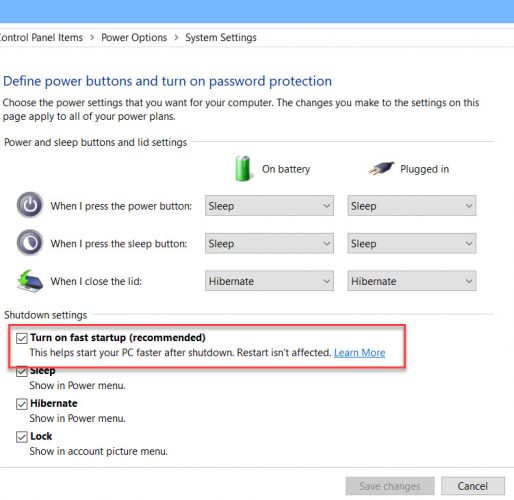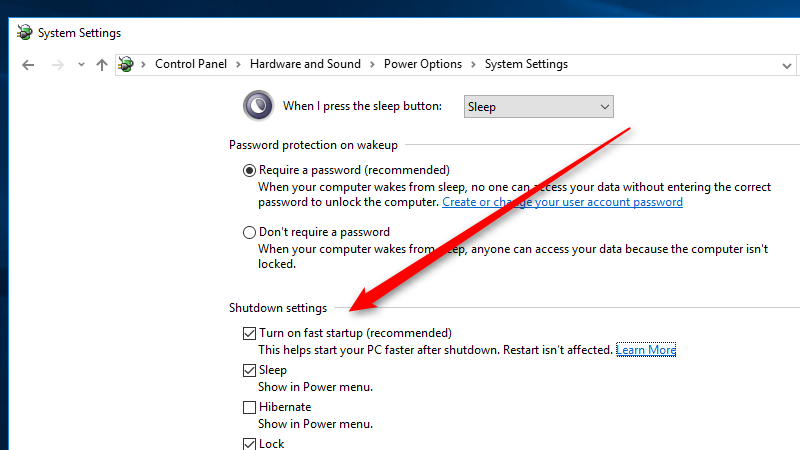

- #Turn off quickboot how to
- #Turn off quickboot drivers
- #Turn off quickboot manual
- #Turn off quickboot windows 10
- #Turn off quickboot windows 8.1
Karl deactivated the quick start in his lab for several multiboot Windows 10 installations and saved 4 x 64 Gbytes of memory. Also when rebooting with change to another operating system installation, this process is finally slowed down by the quick start. Then the loading of this file takes more time than it is needed to boot the operating system and load the kernel. The first argument goes in the direction that the hiberfil.sys hibernation file becomes simply huge by storing the kernel image on machines with a lot of RAM. He writes that if you have a fast computer with SSD /NvME under Windows 10, you should consider disabling quick boot. Blog reader Karl has taken up the topic of quick start (Fast Boot) in a series of tweets and has written some comments on it together. At startup, the system is ready to work again much faster than with conventional booting Problems with multibootīut there are also disadvantages of the quick start, especially in multiboot environments with Windows 10. The advantage of this approach is that when changing to hibernation mode, much less data has to be backed up than under Windows 7 hibernation mode (on Windows 7, the application images from memory are also backed up to the hibernation file).
#Turn off quickboot manual
(it is what is written in the manual anyway) With quickboot enabled, memory are not tested, and so additional ram cannot be checked (at least, that is how i understand it). And i came to the conclusion that it might be because the quickboot is enabled by default. Under Shutdown settings make sure Turn on fast startup is enabled. I have difficulties upgrading my memory (RAM).

Click Change settings that are currently unavailable. (see screenshot below) 3 Select the Disabled (normal), Fast, or Ultra Fast option you want for Fast Boot. 2 Click on the Boot icon, and click on the Fast Boot setting. Click Choose what the power buttons do on the left side of the window. Heres How: 1 Boot to UEFI firmware settings.
#Turn off quickboot drivers
But then the Windows kernel is not stopped, as in Windows 7, but from Windows 8 on, the operating system writes parts of the RAM with the image of the kernel in a file during shutdown.Īt the next boot the saved system status (memory image, process status) is read back from the hibernation file (hiberfil.sys) and the drivers are reinitialized if necessary. To enable this, follow these steps: Search for and open Power options in the Start Menu. To disable Fast startup using Control Panel power options follow the below steps: 1.Press Windows Key + S then type control then click on Control Panel. Under the Shutdown settings section, uncheck the box next to Turn on fast startup (recommended). Disable Windows 10 fast boot via Powershell /v is the REGDWORD /t Specifies the type of. From the left menu, select Choose what the power buttons do. While fast startup is a pretty harmless tool that can deliver a considerable startup speed boost, especially to PCs using hard-disk drives (HDD), some people prefer to have their PC truly shut down when they click the Shut down button on their PC.

#Turn off quickboot windows 8.1
Before shutting down, Windows 8.1 – 10 terminates all running applications and closes the user session. Press the Windows key on your keyboard, type in Power Options, and then press Enter. During shutdown Windows uses a trick to speed up the next startup.

#Turn off quickboot how to
Rundll32.exe powrprof.dll SetSuspendState 0.1,0Ībove is a detailed guide on how to create Shortcut Shutdown, Restart, Sleep on Desktop.The so called "Fast Boot" was introduced in Windows 8 to shorten the time needed to start the system. Similarly when creating Shortcut Shutdown, to create Shortcut Sleep you enter the command Similar to creating Shortcut Shutdown only with Restart you enter the command line:ĭoing the same thing as creating Shortcut Shutdown results in you creating a Restart button How to create Shortcut Restart, Sleep on Desktop Now, if you want to shutdown, you just need to double click on this shutdown icon without using many operations The dialog box appears icon selection for Shortcut -> Click and select OKĪs a result, you have created the icon for the Shutdown button. Step 3: Enter the name for the Shortcut you want to create, for example, here named shutdown -> click Finish:Īfter clicking Finish, you have created a computer shutdown shortcut, but the interface of the Shutdown button is not beautiful, please change the icon for the shortcut to make a right-click on the shortcut to shutdown -> PropertiesĬlick Change Icon to select the icon for the shortcut Step 2: A dialog box appears, enter Shutdown.exe -s -t 00 (where 00 is the time you want to shutdown, if you want to click after a period of time, change the value other than 00 with the calculated time) in seconds) -> click Next: Step 1: Right-click the Desktop and select New -> Shortcut How to Create Create Shortcut Icon Shutdown Shutdown on Desktop The following article provides detailed instructions on how to create a shortcut icon, boot quickly on the screen. You want 1 mouse click can turn off the computer or restart your computer.


 0 kommentar(er)
0 kommentar(er)
